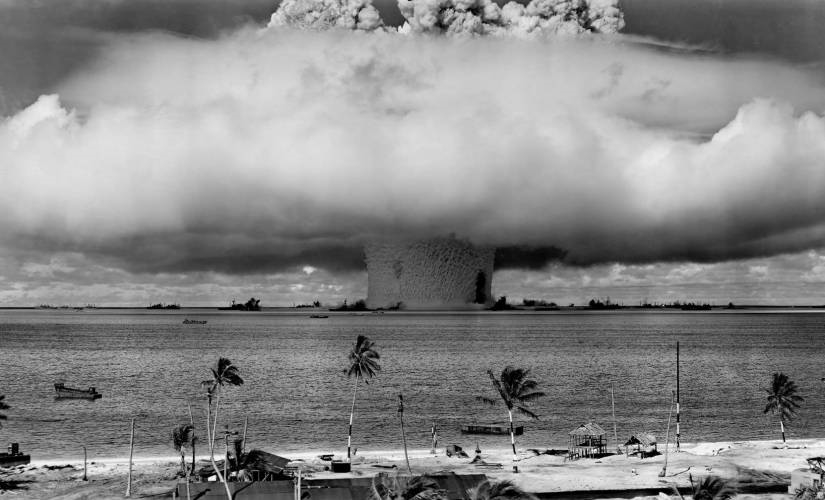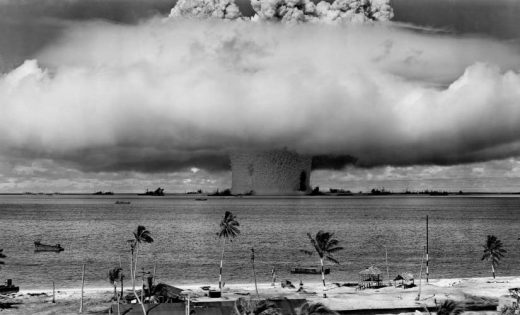Why a Tech Startup is Like a Nuclear Power Plant
Why a Tech Startup is Like a Nuclear Power Plant

My first job out of college was preventing a nuclear power station from melting down. It was summer 1986, the fall-out from Chernobyl was blowing over Europe and, after graduating in engineering science, I undertook a software development project for the UK Atomic Energy Authority. Here is why a tech startup is like a nuclear power plant.
My first job was writing software systems to monitor the nuclear reactor core and to predict the future failure of cooling components.
Nuclear reactors run hot, but excessive heat can be fatal. That is why our cooling system was kept at a cold 700 celsius, flushing liquid sodium through a cooling loop. The irony – at the varying temperatures required, temperature turbulence in the sodium also causes expansion and contraction in those cooling pipes.
Predicting future fatigue of that cooling system was key to keeping the core stable.
When you’re predicting cooling component failure, you’re tasked with using a system of sensors and real-time software. You test and note, and model how temperature change, age, and repeated fluid cycles will influence system degradation.
Since then, my career has been more about starting, nurturing and leading a series of technology companies than nuclear thermodynamics. I haven’t set foot in another nuclear plant. However, at this point, the fundamentals of both businesses feel remarkably similar to me.
Watch out for the volatility of your new startup.
A startup is a volatile system with incredible energy potential. Like a nuclear plant, it has a set of resources at its disposal, each of which is subject to fatigue and failure, with dire consequences. The most important job for any founder, then, is anticipation — forestalling how and when your resources may degrade.
You make all your calculations so that you can keep the lights on to do great things.
1. Build a cooling cash pipeline.
Money is the liquid sodium of every startup; it provides the capital required for product investment and to keep talented employees stable and worry-free. A startup CEO’s prime objective is not just raising that cash, but securing sufficient visibility into its eventual run-down.
The coolant is not the core of the reactor and the financing is not the core of the business, but in both cases, they are vital enablers for delivering the value.
The startup financing system isn’t always set up to support this and can be harrowing for first-time founders of startups.
Investors ask founders for a five-year financial plan but the reality is most CEOs can’t see that far ahead. However, financially naive tech founders might be they know that the financial projections they present are speculative at best.
Both the entrepreneur and the investors understand the dynamic, but both also understand the need to frame the discussion, set expectations and support investment models.
This challenge doesn’t stop when funding is secured. There is a constant need to balance runway with necessary spending, and to begin raising the next round, even before it is needed so that your cooling pipes never run dry.
2. Predict feature fatigue.
At the beginning of any startup, everything is peachy. You have built a differentiated product in a white-space area and your customers love you. But the thing about early, often single-feature products is, they can be easy to compete against.
Do you want to keep your product on its toes? Your customers will always request minor enhancements and optimizations to what they already use and love. But they will seldom ask you for the next big thing, the innovation that can build a defensible position or redefine the next phase of your market. And even those early, hardcore users may churn away eventually.
The founders’ job is to see around the corner of this feature fatigue as though their company was a nuclear plant destined to degrade without constant correction. They should anticipate what should exist at the fusion of unmet customer need and their own company’s market position, before customers have asked for it and before the competition starts damaging the core.
3. Don’t be a react-or.
Founders need to make their company resilient to a fatal system disruption, foreseeing events in the technology ecosystem, the business domain, and the general economy.
In IONA Technologies in the 1990s, when I was CEO, we were so locked into CORBA infrastructure, we were late to spot Java up-ending our industry.
We could have reacted faster. BlackBerry failed to see touch-screens, Sun didn’t see Unix coming and Lotus, the undisputed world champion in spreadsheets, didn’t imagine office suites being a thing until it was too late.
When you are heads-down in daily detail and optimism, it can be hard to see the signals of profound damage in all the noise. Tectonic shifts can dramatically change your world without sounding any immediate alarms.
But tech leaders need to look up and think bigger. Spend less time focused on tactics and more on the larger, macro market changes happening in our industry.
Avoiding the meltdown
Smart entrepreneurs may be tempted to think that they will be able to see the signs of meltdown emerge slowly, that they will be able to course-correct.
The reality is, for many startups, when the implosion happens, it comes dramatically. Everyone remains optimistic but, when a company can’t make payroll, often employees get no warning at all.
A nuclear reactor doesn’t fail gradually, it ends suddenly.
Cooling pipes aren’t very forgiving – when they burst, they cause core temperature to rapidly escalate. By the time you discover a problem, it is generally too late to do anything about it.
The only way to make yourself resilient is to see sufficiently ahead of time that you cover off the potential failure vectors.
Don’t just optimize for success – plan and continue building for inevitable degradation of the presumed steady-state.
The post Why a Tech Startup is Like a Nuclear Power Plant appeared first on ReadWrite.
(15)


